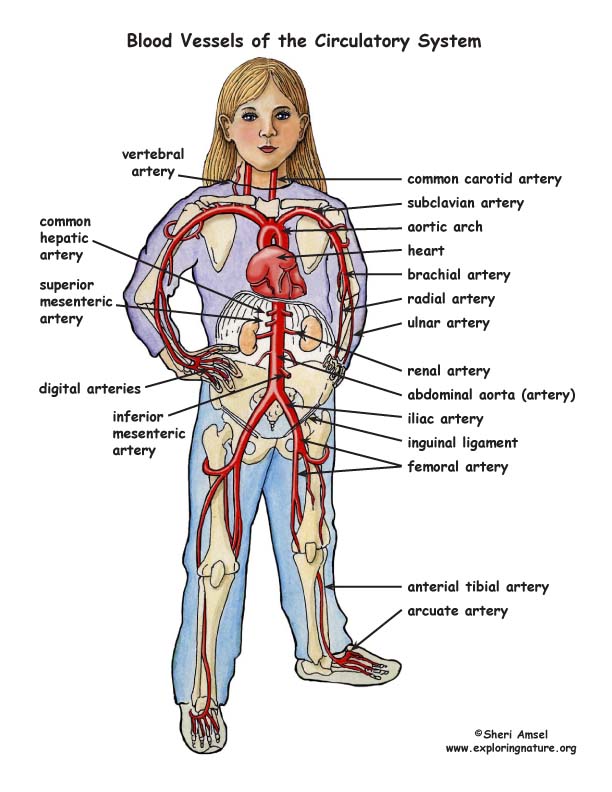

The blood vessels of the body form a circle that begins and ends at the heart. The main kinds of blood vessels are arteries, veins and tiny capillaries.
Arteries and veins conduct blood around the body your whole life. It is estimated that there are 60,000 miles of blood vessels in the body. The circle begins and ends at the heart.
Arteries carry blood full of oxygen, picked up in the lungs after you inhale, away from the heart to every tissue of the body. The heart squeezes (contracts) and sends the blood into the first and largest artery - the aorta. Now it is on its way.
As the blood travels further from the heart, the arteries get smaller and smaller. Soon they are so tiny, they are just one cell thick. Now they are called capillaries. There are capillaries lying right next to all of the tissues in the body. They will give off their oxygen O2 and nutrients and take on carbon dioxide C02 and waste.
Once the blood drops its O2 and picks up the CO2, it is "oxygen poor" and will start its trip back to the heart. The blood travels back to the heart in veins. The veins get larger and larger as they get closer to the heart. The last and largest veins - the vena cavas - dump the blood back into the heart. Now the cycle starts again. To review:
heart >arteries >arterioles >capillary beds >organs & tissues >venous capillaries >venules >small veins >larger veins >great veins (vena cavas) >heart
